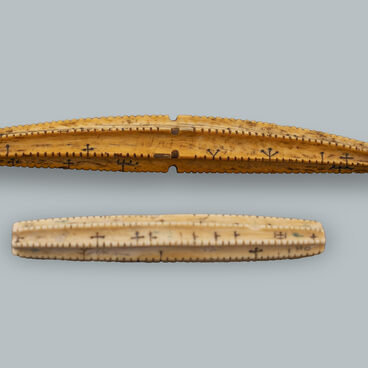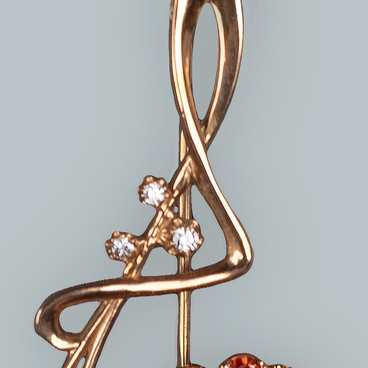In 1601, during the reign of Boris Godunov, the Mangazeya Province was established on the right bank of the Taz River (present-day Tyumen North) between the Ob and Yenisey Rivers.
It was there that the centers of sable hunting and Arctic seafaring were located, from where the pioneers set off in wooden koch boats to Taimyr and further on to Eastern Siberia. The Mangazeysky sea route connected the White Sea and the Kara Sea, then the wooden koches were portaged across the Yamal Peninsula and set adrift again in the Ob or the Taz Bay. The boats were used to go down the Turukhan River to the Yenisey River via the Yenisey portage.
In 1940–1941, hydrographers found the remains of the winter huts of Russian explorers on the Faddey Islands and in the Bay of Sims. Among the finds were items dated to the 17th century: Orthodox crosses, icons, coins and bartering items.
Another interesting find was discovered in 1968 near the village of Nosok in the Ust-Yenisey district in the lower reaches of the Yenisey River: tinderboxes, flintlocks, a helmet and chain mail. The objects were also dated to the 17th century and attributed to the era of Russian exploration of Taimyr.
The chain mail, helmet, stone tool and double-edged spear were handed over to the museum by Leonid Ivanovich Bozhko on 26 September, 1968; he also reported the location of the find.
Chain mail is the most ancient form of armor, and the principle of intertwined rings has remained unchanged for centuries. Making chain mail was a long and time-consuming process. First, the craftsman coiled about 600 meters of 1mm thick wire onto an iron rod, then using wire nippers he cut the spring on one side, thus obtaining 20,000–25,000 iron rings that were 6–10 mm in diameter. He then overlapped the rings, flattened them with a hammer or pliers and riveted them together.
One riveted ring was joined with four others (also riveted or welded) until a ring cloth was formed. Finished Russian chain mail was a shirt about mid-thigh long with short, wide sleeves. Sometimes there was a slit in the front of the chain mail, and the back of the hem was made a little shorter for convenience when riding. The collar was sometimes of a stand-up type and laced with a leather strap.
It was there that the centers of sable hunting and Arctic seafaring were located, from where the pioneers set off in wooden koch boats to Taimyr and further on to Eastern Siberia. The Mangazeysky sea route connected the White Sea and the Kara Sea, then the wooden koches were portaged across the Yamal Peninsula and set adrift again in the Ob or the Taz Bay. The boats were used to go down the Turukhan River to the Yenisey River via the Yenisey portage.
In 1940–1941, hydrographers found the remains of the winter huts of Russian explorers on the Faddey Islands and in the Bay of Sims. Among the finds were items dated to the 17th century: Orthodox crosses, icons, coins and bartering items.
Another interesting find was discovered in 1968 near the village of Nosok in the Ust-Yenisey district in the lower reaches of the Yenisey River: tinderboxes, flintlocks, a helmet and chain mail. The objects were also dated to the 17th century and attributed to the era of Russian exploration of Taimyr.
The chain mail, helmet, stone tool and double-edged spear were handed over to the museum by Leonid Ivanovich Bozhko on 26 September, 1968; he also reported the location of the find.
Chain mail is the most ancient form of armor, and the principle of intertwined rings has remained unchanged for centuries. Making chain mail was a long and time-consuming process. First, the craftsman coiled about 600 meters of 1mm thick wire onto an iron rod, then using wire nippers he cut the spring on one side, thus obtaining 20,000–25,000 iron rings that were 6–10 mm in diameter. He then overlapped the rings, flattened them with a hammer or pliers and riveted them together.
One riveted ring was joined with four others (also riveted or welded) until a ring cloth was formed. Finished Russian chain mail was a shirt about mid-thigh long with short, wide sleeves. Sometimes there was a slit in the front of the chain mail, and the back of the hem was made a little shorter for convenience when riding. The collar was sometimes of a stand-up type and laced with a leather strap.



